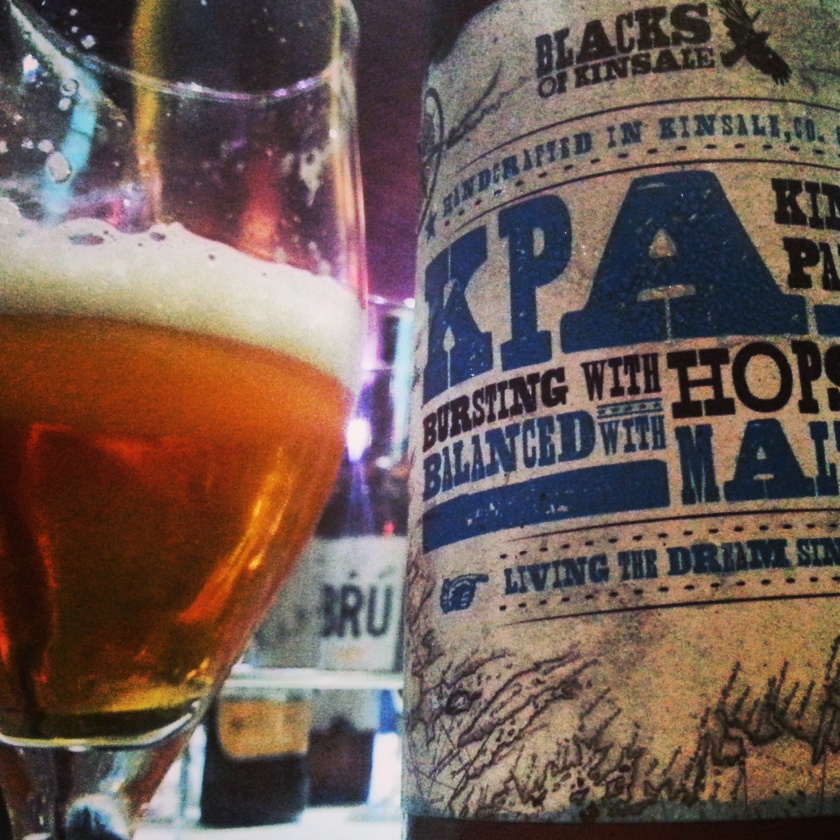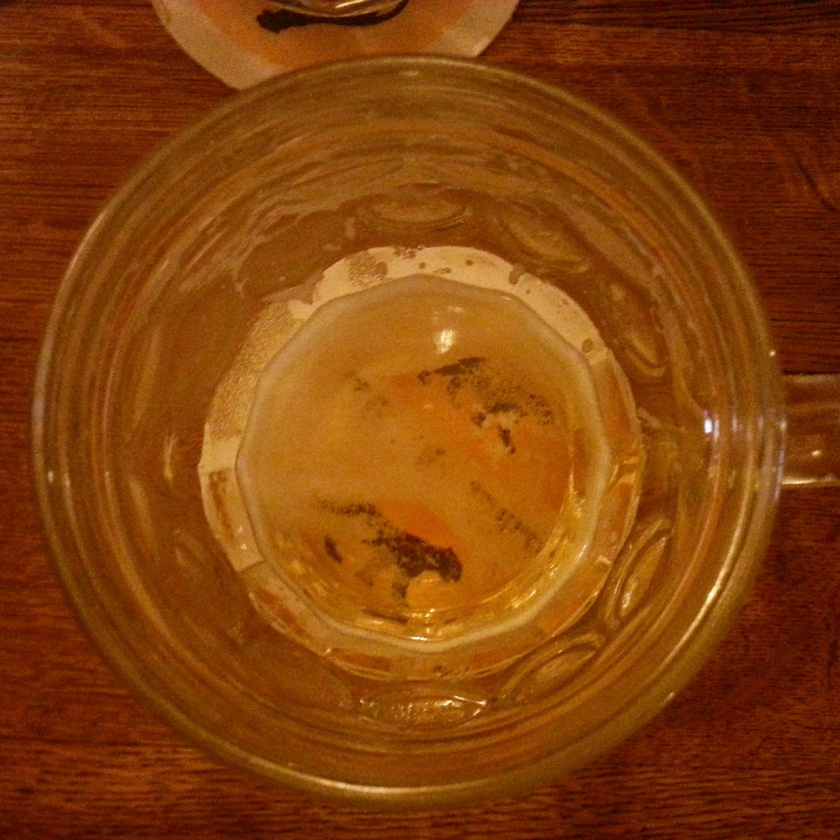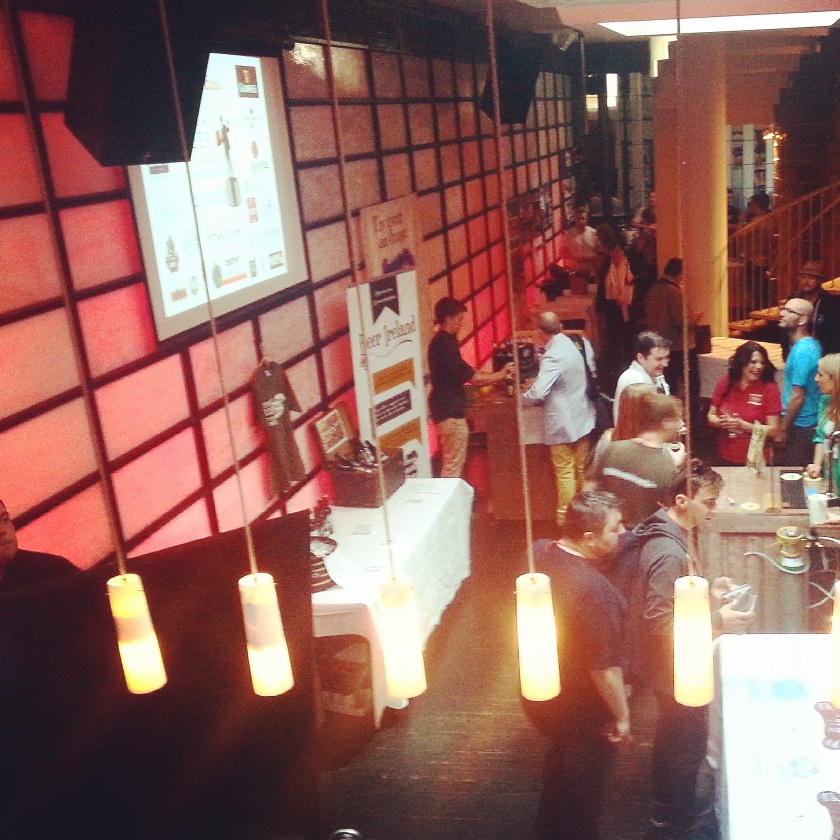
In a series of four features, I have been examining the beer culture in four countries through the lens of a particular event. This fourth and final part explores the thrilling growth of craft beer in Ireland, observed whilst attending the European Beer Bloggers Conference in Dublin. Here are links to Part 1, featuring the W-Ales Beer Festival; Part 2, on the Bermondsey Beer Mile; and Part 3, about BrewDog’s Punk AGM 2014.
Four Nations of Beer has come to an end, and I cannot think of a more climactic and satisfying conclusion than this year’s European Beer Bloggers Conference in Dublin. Over the course of June I visited four very different cities, with diverse beer cultures in different stages of development, but it has been in Ireland where I found the most to learn about and arguably the most to enjoy.
My trip to Dublin had everything – visits to incredible pubs, a glimpse at breweries both tiny and mind-bogglingly large, and glass after glass of excellent beer. Thursday evening’s optional pub crawl, hosted by eminent Irish beer blogger, Beoir chairman and (if we’re being honest) EBBC14 co-organiser Reuben Gray, was as eye-opening as it was thirst-quenching. The wet, mild evening was brightened with glorious beers in a variety of styles, enjoyed in pubs and bars with tangible atmosphere and a crackle of excitement in the air. This was more than just Dublin’s famous craic – this was a city’s beer culture in euphoric transcendence.

I’m not suggesting that until we got there, Dubliners were just throwing back pints of muck with nary a thought to what good beer was, far from it. In the UK, the growth of microbreweries, self-identified ‘craft beer’ and the evolution of pubs into ‘beer destinations’ all seem to have happened gradually over several decades. In Ireland, it seems to be all happening at once, or at least, in the space of a few years, lending an intensity and purpose to the beer scene that is deeply infectious. I had a broad sense of this happening in Ireland before we arrived, having read blogs from the likes of Reuben and the Beer Nut, but seeing this in the flesh made it not only real, but alive. We were treated to an intensive crash course in everything that those of us on the other side of the Irish Sea had been missing out on. But did Dublin really have so much to offer to the already jaded palates of bloggers from the craft-fatigued UK and beyond? Unquestionably so.
Many of us (myself included) found a new favourite DIPA in Galway Bay’s Of Foam and Fury, a blisteringly bold and bright lupulin monster, its hop character so muscular and accomplished that the ultimate compliment was paid: reverent, whispered comparisons to Pliny the Elder. Drinking it was an experience all the more bittersweet for knowing that those of us not based in Ireland may not taste it again for some time (more on that later). With their growing chain of popular bars and American-influenced craft beers, the brewer of that delectable beer, Galway Bay Brewery, seems set to be the Republic of Ireland’s more subdued answer to something like BrewDog. Note that emphasis, though. Their beers are for the most part US or Irish styles by-the-numbers but done well, and the bars vary from the gastropub-esque Black Sheep to the more vertical-drinking-orientated and lively Brew Dock (which even sounds like… never mind). But there’s a spirit there, an active participation in the changing of the local beer landscape, that reminded me somewhat of BrewDog. Whether Galway Bay grow at anything approaching a similar rate would be interesting to see.

There are of course many other skilled brewers among this new, younger breed, brewing beers with distinctive character and, in many cases, a sense of humour that is essential to a profession so challenging and fraught with hardship. We had the opportunity to meet many of these brave people at different showcases of Irish beer at The Church, the venue where much of EBBC was held, and there were some truly exemplary beers on display. Rascals Brewing Co, of Rathcoole in Co Dublin, impressed many of us with both their sweetly subtle and spicily nuanced Wit Woo Belgian-style witbier, and their extremely accomplished Ginger Porter, which showed judicious restraint in its ginger character, using just enough to heighten the sharper and sweeter edges of the beer. There was something very assertive about the beers brought along by Blacks of Kinsale: among them a Kinsale Pale Ale (above) with a light, just-sweet-enough body and bitterness like the fast jabs of a boxer; and a Black IPA that was rich, sexy and seemed to know it. Trouble Brewing brought a lovely Lazy Sunday Saison, which prickled the palate with tropical fruit juice in a crisply spicy body, and Big Bear brown ale, which was like a warming slice of coffee cake served with a hug. N17, started by Ireland’s only [first – see this comment from The Beer Nut] female beer sommelier Sarah Roarty in January this year, got a lot of appreciative nods and respectful noises for its Oatmeal Stout served on cask, a deeply decadent and sumptuously smooth example of the style to rival the best. On the Thursday night pub crawl, N17’s neatly balanced Rye ale was enjoyed at the Norseman pub in Temple Bar, where it was served in the most ‘craft’ of methods: through a Randall packed with American hops.

Whilst many of these breweries were new, each were producing a range that suggested an eagerness to expand. With so many delicious new Irish beers being enjoyed over the weekend, those of us based in the UK were at a loss to understand why we hadn’t seen any cross the Irish Sea. I asked this at the Irish brewers’ panel Q&A at the conference and was told that, quite simply, they can barely make enough to supply Irish demand, never mind the ravenous craft-thirsty palates of the UK. Reuben pointed out that Carlow, brewers of the Goliath-beating O’Hara’s Stout, used to export the vast majority of their beer to foreign markets, but that now that position is reversed, as the Irish appetite for craft beer has rapidly increased. Hopefully, with the help of organisations like Beoir (Ireland’s beer consumer group) and the Vanguard Beer Collective (which helps small Irish brewers get their beer on sale in more outlets), the growing reputation of Irish craft beer will get UK importers interested, and change the perception of Irish beer being only one brand.
Speaking of which, bloggers attending the conference were invited by Guinness to visit St James’ Gate on the Friday evening for a tour of the new brewhouse and an evening of food and beer. Brewhouse #4, intended to take the place of Brewhouses 2 and 3 in terms of capacity, was a spectacle few of us were expecting. Having been escorted through the city-within-a-city that is St James’ Gate, through tunnels and between titanic vessels and buildings, we eventually found ourselves in a building with a clean, clinical white interior. A door, or rather, part of a wall opened, and we were faced with Brewhouse #4 in all its glory. As guided bloggers stood, mouths agape, in a room about the size of a football pitch (or three), I tried to place some sense of scale on it. The biggest brewery I’ve seen recently is BrewDog’s new site at Ellon, where they recently proudly announced a fifth brewhouse vessel. Here, the coppers and kettles seem to run on and on to the horizon, in a space that looked like the first brewery on the Moon. We were politely asked not to take photos of it, but even those that did failed to capture its panoramic size and scale.

Being shown something that size made Guinness seem all the more vast, alien and robotic, and they obviously were aware of this. We were then escorted into a large function bar at the Storehouse and treated to pairings of various beers with different foods, each with a local Irish ingredient. Here, the brewers we were introduced to in the gigantic brewhouse mingled freely with bloggers, took questions, and asked us just who we were exactly, to get treated to all this food and drink? “Good question,” many replied. “I just write a blog.” “I’ve written some bits and pieces.” “A couple of books.” “All about beer, yes.” The idea of beer writers, at least, is still something of a foreign (extra) concept to them. Whilst there were FES marinated burgers, oysters, pale ale battered fish and more besides, some of us were taken with things far less obvious. Guinness had recently run a competition among the brewing staff to brew a new beer, and one of the entries, Night Porter, was very impressive indeed – a really chocolaty, crisply bitter porter that made Guinness Extra Stout, Draught and even FES seem rather sluggish by comparison.
Still, while Guinness’ attempts at openness seemed heartfelt, talk of their tap-covering stunts on Arthur’s Day and the like persisted over the course of the weekend. This was a global brand, managed by one of the world’s biggest drinks companies, and whilst the marketing and hospitality we witnessed was of the highest possible standard, ultimately that’s all it was: marketing and hospitality. As for changes in their beer lineup, the Smithwick’s Pale Ale, hopped with Amarillo we are told, was decent enough, but must surely be aimed at knocking off the Galway Hooker taps that have fought tooth-and-nail to be alongside the mainstream draught brands in Irish bars. If the Diageo Empire is trying to strike back, does that then spell doom for the rag-tag rebel alliance of Irish microbrewers? Almost certainly not.

Breweries the size of Guinness obviously turn as slowly as ocean liners in tar, and if they are only now getting behind the idea of a hoppy pale ale, it will be years before it occurs to them to make saisons or DIPAs, by which time the craft brewers will have mastered barrel-ageing, blending, wild fermentation and so on. Given what they have achieved in the past few years, and in some cases, the past few months, it’s difficult not to be excited. What I expect, and hope, to see is the continuing redefining of Irish beer’s identity, whether that means reinventing traditional beer styles, unearthing and mastering ancient ones, or pioneering something entirely new. The recent crowd-funded brew between Beoir members and Blacks of Kinsale – ‘Beoir #1’, a juicy, buzzing and belligerent DIPA – is an extremely promising example of a beer community growing, and prospering, together. Beoir #1 would have been the first commercially-brewed DIPA in Ireland, were it not for a certain Pliny-esque beer from Galway Bay.
And so, when I returned home to London, I found myself thinking about Of Foam and Fury once more, and what it represents. That artwork, reminiscent of both a stained glass window and the sailor tattoos of twinkly-eyed old barfly, is evocative of the booming waves of these new beers washing clean the Guinness-stained soul of Ireland’s beer culture. With those waves comes a sound: a powerful, resonating note, of voices raised in euphoria in Temple Bar at midnight; of the heavy clunk of mugs full of bright beer in dim light; of victory over the old and the stale; of craft and craic.





















